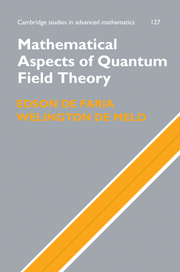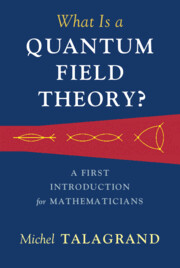Quantum Field Theory for Mathematicians
The approach to quantum field theory in this book is part way between building a mathematical model of the subject and presenting the mathematics that physicists actually use. It starts with the need to combine special relativity and quantum mechanics and culminates in a basic understanding of the standard model of electroweak and strong interactions. The book is divided into five parts: 1. Canonical quantization of scalar fields; 2. Weyl, Dirac and vector fields; 3. Functional integral quantization; 4. The standard model of the electroweak and strong interactions; 5. Renormalization. This should be a useful reference for anybody with interests in quantum theory and related areas of function theory, functional analysis, differential geometry or topological invariant theory.
- Gives a unique mathematical development of the subject
- Based on courses given at Harvard
- Includes many exercises and solutions
Product details
June 1999Hardback
9780521632652
716 pages
234 × 156 × 38 mm
1.17kg
Available
Table of Contents
- 1. Relativistic quantum mechanics
- 2. Fock space, the scalar field and canonical quantization
- 3. Symmetries, conserved currents and conserved quantities
- 4. The scattering matrix and Feynmann diagrams
- 5. Differential transition probabilities and predictions
- 6. Representations of the Lorentz group
- 7. Two-component scalar fields
- 8. Four-component scalar fields
- 9. Massive vector fields
- 10. Reformulating scattering theory
- 11. Functional integral quantization
- 12. Quantization of gauge theories
- 13. Anomalies of gauge theories
- 14. SU(3) representation theory
- 15. The structure of the standard model
- 16. Hadrons, flavor symmetry and nucleon-pion interactions
- 17. Tree-level applications of the standard model
- 18. Regularization and renormalization
- 19. Renormalization of QED
- 20. Renormalization and preservation of symmetries
- 21. The renormalization group equations.






